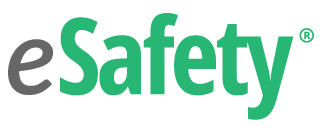- Before the inspector ever comes to your location, they’re going to research the company: previous inspections, industry hazards, worker complaints, etc. Make sure that relevant personnel at your organization (managers, safety personnel, the president) have access to and knowledge of your inspection and complaint histories, as well, so that you’re prepared.
- When the inspector arrives, he or she will present credentials certifying that he or she is an OSHA compliance officer that will include a picture and serial number. Record this information for your records. Be wary of anyone claiming to be an inspector who does not present credentials.
- The compliance officer will explain to the employer the reason for the inspection, scope of the inspection, and the inspection techniques that will be used. You will select a representative to accompany the officer during the inspections.
- The inspector and representative(s) will perform a walkaround of the areas included in the scope of the inspection, looking for potential hazards and standards violations. Some violations may be corrected immediately, but may still result in a citation. The inspector will also look to see if the official OSHA poster is posted as required. The inspector will review documentation, including on-site illness and injury records (for the past three years, and year-to-date) and supporting documents (first aid logs, Workers’ Compensation claim documentation, employee medical records etc.), required safety documentation, emergency procedures, hazard analyses, and safety training records. During the walkaround, the inspector will also conduct informal interviews with randomly-selected employees (from entry to management level), asking questions about emergency procedures, PPE, and working practices.
- After walking through the facility, the compliance officer will discuss findings with the employer and representatives. This will include courses of action that may be taken by the employer, employees’ rights, and consultation services which are available to the employer to assist in compliance.
If a serious standard or hazard is discovered during the inspection, OSHA may issue your company citations or fines, within six months of the inspection. The citation will describe the violation, penalties imposed for the violation, and the deadline for corrective action. You may be able to have an informal conference with your OSHA Area Director to discuss the citation and inspection, and possibly work out a settlement agreement. As an employer, you also have a window of 15 working days in which to formally appeal the citation in writing.
An audit, though it may result in penalties, can be a positive thing for your organization. Audit findings can help you determine where new safety practices and safety training is needed, to keep workers safe and better meet OSHA regulations.
The eSafety training library has courses and reporting features to keep your organization compliant. We’d love to help you figure out the best safety training option for you and your safety program – contact us today!


